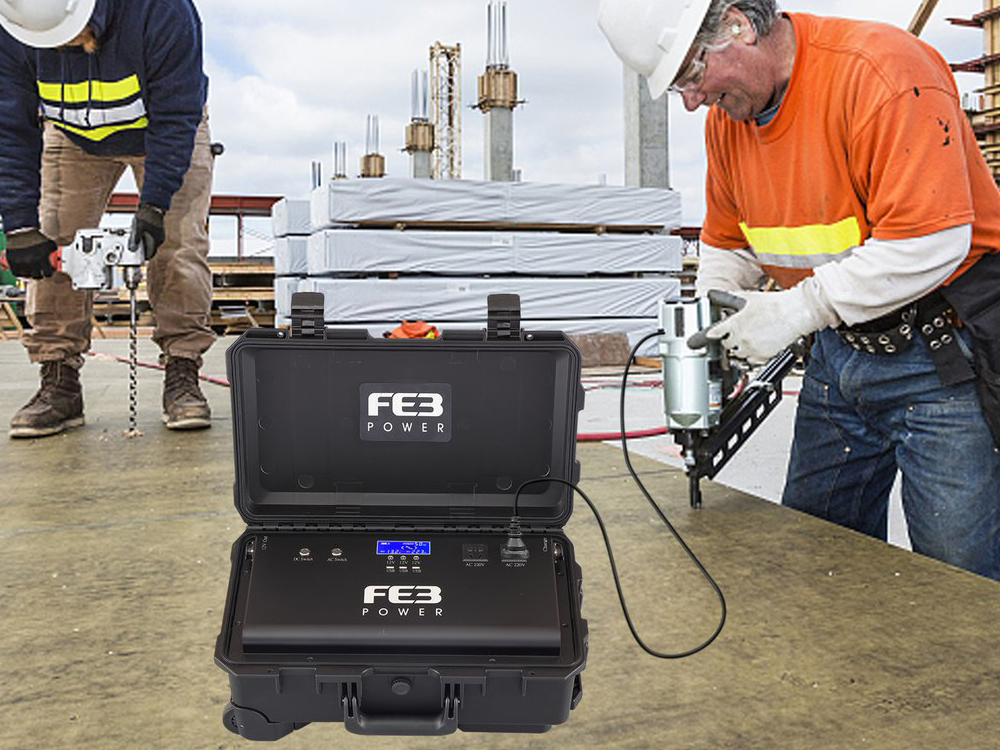
WHAT IS A LIFEPO4 SOLAR GENERATOR?
Solar generators are great sources of backup power for all sorts of indoor appliances and outdoor trips.
They are portable and lightweight, allowing you to charge various electronic devices via the sun’s energy.
More importantly, they are eco-friendly and, unlike conventional generators, do not require you to keep loads of fuel on hand.
This article shows you a new type of solar generator—the LiFePO4 solar generator. What’s it? And what is it used for?
There are lots of reasons why you must choose the LiFePO4 solar generator. However, the most important of them is that the lithium iron phosphate (LiFePO4) battery.
Unlike lead-acid batteries, the LiFePO4 batteries offer significant advantages, including improved discharge efficiency, a long life span, and the ability to deep cycle while maintaining optimum performance.
LiFePO4 batteries have been around for a while.
However, it wasn’t until recently these batteries became a natural choice for many applications, including the solar industry.
Over time, they provide more energy and longer use cycles, making them the perfect investment for you and a good choice if you are thinking of the long term.
Other reasons why you should consider this solar generator include the following:
1. PERFORMANCE
Compared with regular lead-acid batteries, LiFePO4 solar generators have a much longer life span. A LiFePO4 battery can operate perfectly for 7-15 years with up to 2500 life sycle.
2. SAFETY
LiFePO4 batteries are safe to use due to their extremely stable chemistry.
These batteries will not explode even under dangerous conditions like fire, short circuits, or collisions.
Plus, you can use up all of their full capacity without fear of explosion.
3. CLIMATE RESISTANCE
Both lead-acid and LiFePO4 batteries would lose their capacities in extreme weather conditions.
But then, the energy loss from LiFePO4 batteries is minimal compared with lead-acid batteries.
At -20 degrees Celsius, your LiFePO4 battery will likely retain up to 80% of its capacity compared to 30% when using an AGM battery.
4. LIGHTWEIGHT
On average, lead batteries are almost four times heavier than LiFePO4 solar generators of the same capacity. For instance, a 150Ah lead-acid battery can weigh up to 50kg, while a LiFePO4 of the same capacity weighs only 15 kg.
5. FAST CHARGING
While LiFePO4 batteries charge fast and at the same rate till 100%, a lead-acid battery takes time to absorb its last 20% charge.
WHAT EXACTLY IS A SOLAR GENERATOR?
A solar generator usually uses solar panels to generate automatic backup power.
Solar generators work by collecting solar energy from the sun through solar panels and storing it in solar batteries built into the generator.
The energy is then converted into alternating current (AC power) by an inverter before the generator releases the stored energy in home appliances and other electronic devices.
When these three parts are combined, the battery, the solar panel, and the inverter, they would form into a fully functional solar generator.
LiFePO4 solar generators can be used for various scenarios like camping, during power outages, and many more.
As a result, they come in different shapes and sizes designed for different applications and needs.
